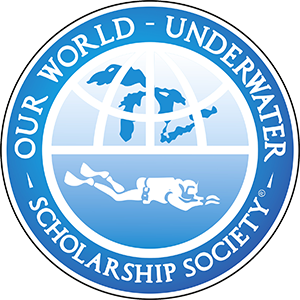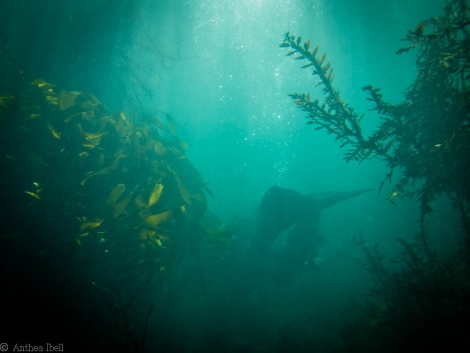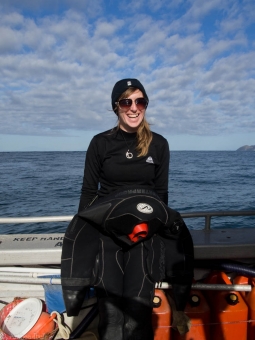Leaving the South Island behind, I headed to Wellington to visit the Museum of New Zealand Te Papa. The museum’s fish collection dates back to 1869 and contains around half a million specimens. The collection consists of many ‘type species’ from which new specimens can be identified with. I met with Andrew Stewart, the fishes Collection Manager. With 30 years experience Andrew is New Zealand’s leading fish taxonomist. With the introduction of genetics to species identification, taxonomy is a dying art – especially since the only way to get good at it is practice – generally involving a 10 year internship period, the longest of any profession.
A tour of the museum’s facilities made me realize just how important the collection is. With a recent multimillion dollar upgrade the facilities are setting the standards for museum collections. There storage areas are protected from hazards with alcohol detectors that set off an alarm if any traces of leaking alcohol are detected and a fast foaming fire extinguishing system. Ventilation in all the work and lab areas means that people are safe from hazardous fumes and strict regulations on the opening of samples or removal from the collection ensure that all the samples are accounted for in the database that is continuing to grow. Te Papa houses some of the world’s largest fish and marine animal specimens including a great white, squid and even a manta ray found in the North of New Zealand .
Walking through the building it is obvious that such meticulous care of the specimens is not an easy, nor inexpensive job. This brings with it concerns that many facilities are not able to care for or catalog their collections in such a careful and useful way. Te Papa’s collection is important not only nationally, to preserve important specimens of endemic and rare species but also plays an important role internationally, providing ‘Type Species’ from the South Pacific and also the Sub-Antarctic and Antarctic.
While at Te Papa I was also able to learn about a current project that is looking at deep water fish species around New Zealand. The project “Biodiversity highways and biogeographic origins: a voyage of discovery in the deep sea” funded by the Royal Society (Marsden fund) is being led by Vincent Zintzen. The project is looking at quantitative ecological analyses of the fish fauna of seamounts and ridge systems and investigating the relationship between depth and latitude on species richness.
The project involves Baited Remote Underwater Videosystems or ‘BRUVS’ which are made up of two cameras mounted on a frame and face slightly inwards and have bait in front. This is similar to 3D camera systems and allows the video to be analyses with specialist software and with this the species, measurements and counts of fish can be collected. The BRUVS were deployed at seven sites thorough New Zealand and over varying depths. The camera systems were deployed using ropes and were buoyed at the surface. The deepest deployment was 1750 meters… that’s a lot of rope!
The video collected has so far been incredibly interesting. Vincent recently published a paper on his findings with Hagfish. Not only are these interesting animals scavengers but he has evidence of them actively hunting by burrowing into the sand grabbing fish and then tying their eel like bodies into a knot to put themselves and their prey out of the hole. The video also revealed the Hagfishes ability to produce large amounts of slime that chokes predators. There is still a lot to learn about these animals but the video observations have definitely brought more to light about these deep fishes.
While in Wellington I attempted to help with Post Doctoral Fellow, Shane Geange’s work with Macrosystsis through the Victoria University Coastal Ecology Laboratory. The weather did not cooperate and apparently this is not surprising after the unseasonably bad weather since the beginning of the year. Shane’s work is looking at the stratification of Macrocystis pyrifera and its role in the ecosystem through habitat use and competition with the introduced species, Undaria.
In Auckland I was able to meet with John Montgomery who is the head of the Leigh Marine Lab at the University of Auckland. John has been working on sensory systems in Elasmobranchs; specifically looking at the electroreceptors. Elasmobranchs (sharks and rays) have the ability to detect the electrical field given off by their prey. John has discovered the part of the shark brain that allows the individual to cancel out the interference from the animals own electrical field when hunting.
The movements of New Zealand’s Great White Shark population have been investigated by the Department of Conservation (DOC) through tagging and photo identification. I was able to meet with Clinton Duffy, the head scientist on the project that has run from 2005 to 2011. With DOC’s recent change to only fund research on high priority species, the shark research has stopped. Unfortunately no marine species have this priority, not even the Maui Dolphin, which was recently shown to only have 55 adults in the population!!!
Satellite tags were deployed on sharks at both the Chatham Islands and Steward Island. The long range movements of the sharks showed that the populations at the islands remained completely separate while in NZ but there was cross over in the tropics around New Caledonia. All the sharks tagged and observed at the islands have been sub-adult or adult males, with the females likely staying further north in the warmer waters off the Northern Cape. The tags also showed that some of the individuals from New Zealand were travelling along the east coast of Australia. This information has gained interest from Australia’s CSIRO Marine and Atmospheric Research because this data will affect their efforts to gain a stock assessment of Australian Great White populations. Photo identification was introduced at Stewart Island and has shown that many sharks return year after year.
Great White Sharks are notoriously hard to study and this is due to the fact that there is very little known about them. The findings gained through this research of the New Zealand populations is showing more about where they travel and from this hopefully we can understand more about their life histories and population dynamics.
Many thanks to Andrew Stewart and Vincent Zintzen at Te Papa, Shane Geange at Victoria Univeristy, Prof. John Montgomery at the University of Auckland, Clinton Duffy and Joe and Jane Camuso for all their generosity.





















